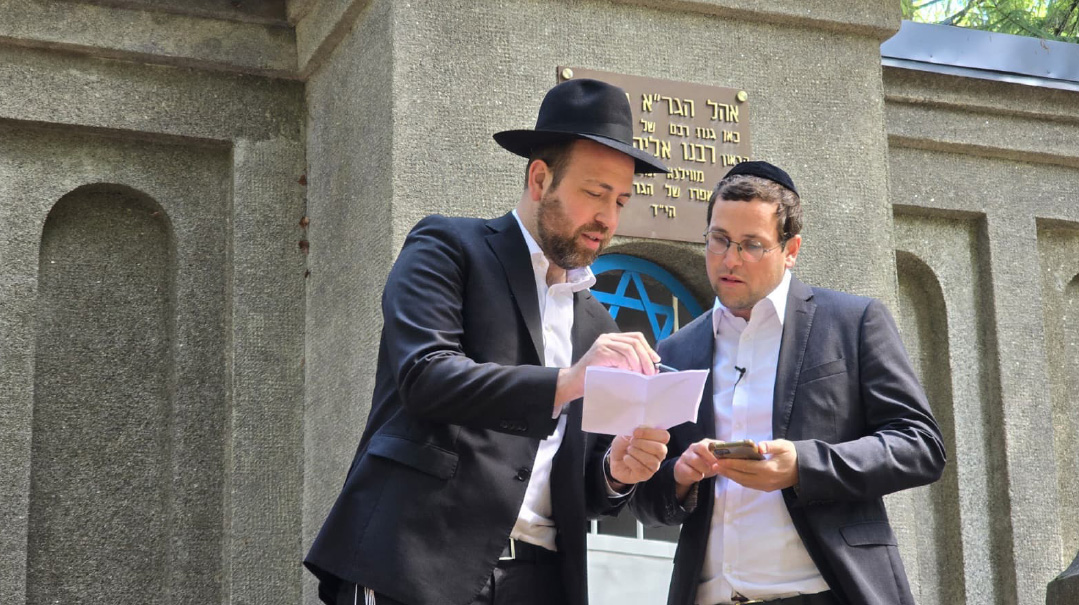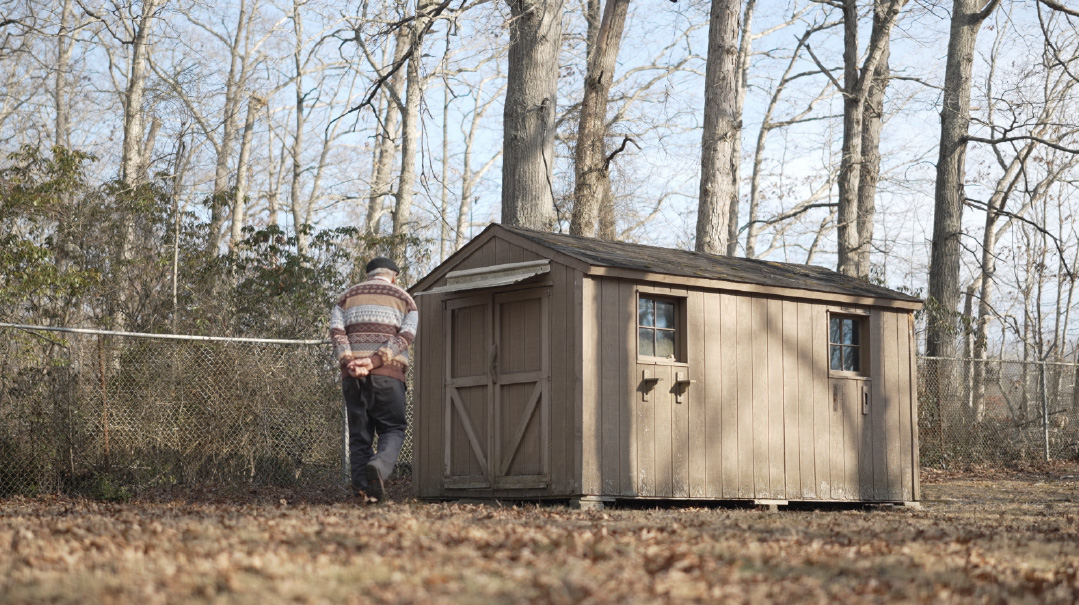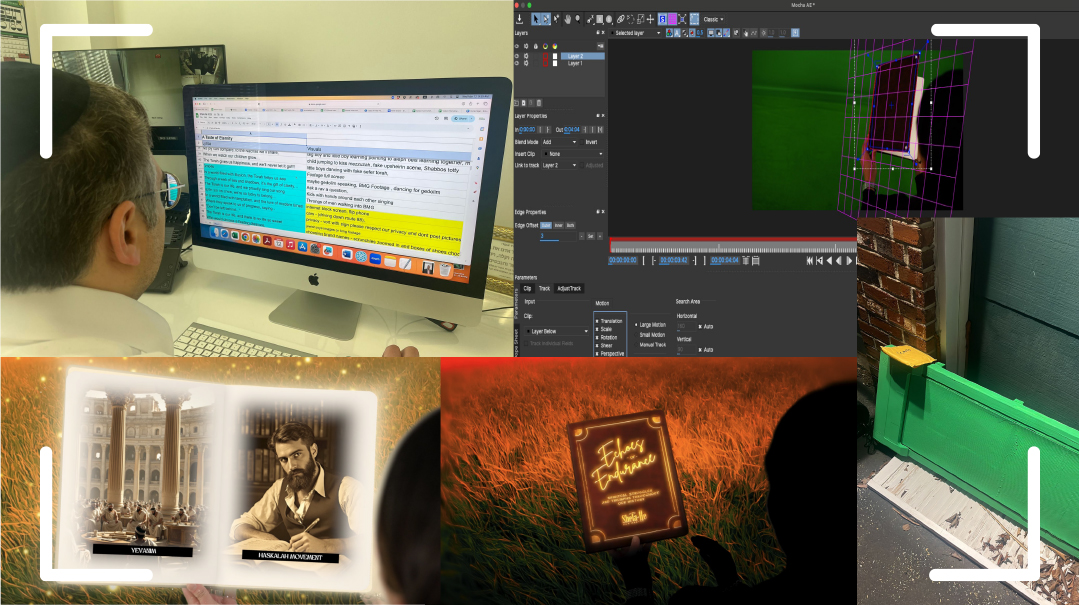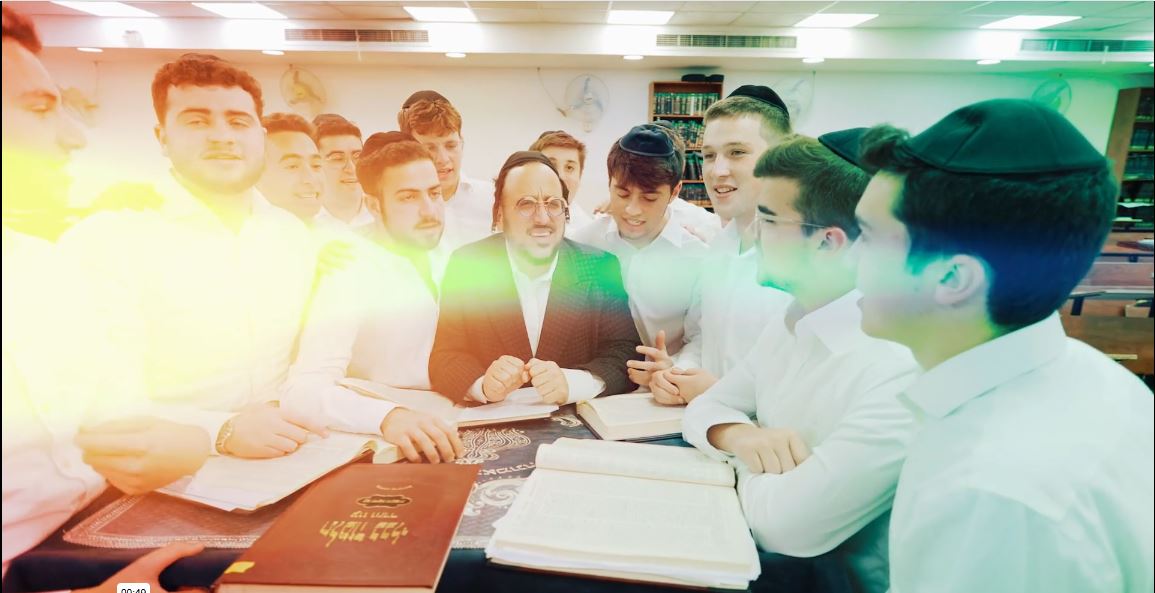Hatzolah of Central Jersey
| May 21, 2024We’ve done portrayals of emergencies, and one of our biggest struggles is making sure everything feels realistic
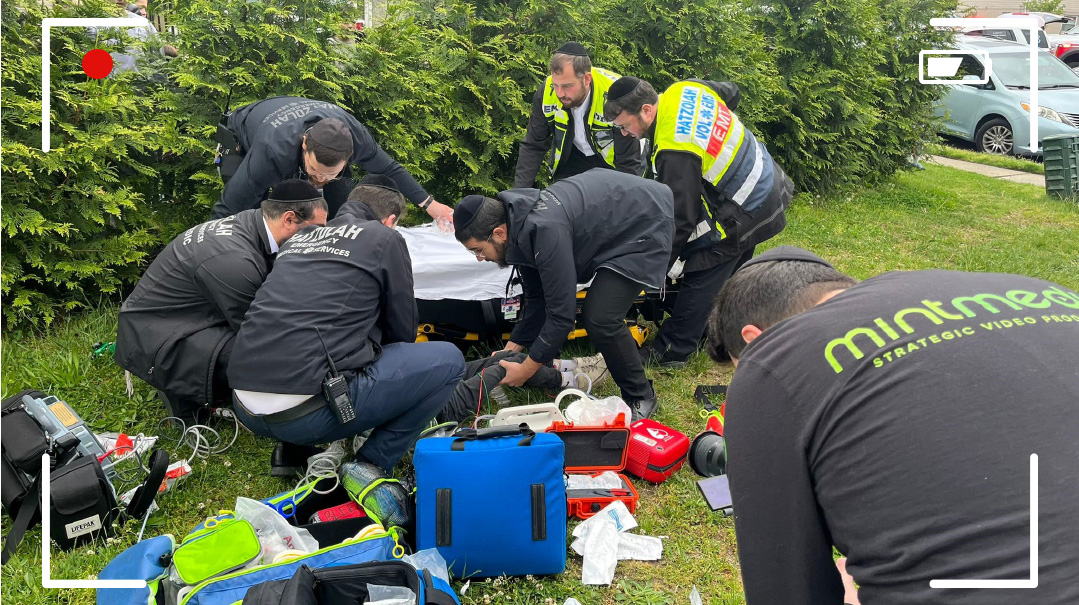
Client: Hatzolah of Central Jersey
Objective: Feature and promo videos for their fundraising campaign
Film Locations: Green screen studio and private home in Lakewood, New Jersey
Project Deadline: May 2024
The Proposal
“We want to create several videos for a fundraising campaign,” Meilech Esterzohn, recently appointed CEO of Hatzolah of Central Jersey, said on our conference call.
His vision for the clips was to showcase several actual emergency calls, with the goal of highlighting the importance of Hatzolah’s lifesaving work.
“Do you think those will make good fundraising clips?”
Senior production manager Moshe Niehaus replied with the first question we always ask on calls like these: “Why does Hatzolah need money? I think we all understand the importance of the organization, but for people to donate, they also have to be convinced that their money is important for the cause.”
Meilech explained that in Hatzolah’s staggering yearly budget of close to $4 million, there are three primary expenses: mandatory training for the volunteers, equipment, and a reliable operations system, including the communications system, insurance, maintenance, and more.
“Our EMTs and paramedics are all volunteers, but it can cost upwards of $80,000 to properly train and outfit each paramedic. In addition, since the whole premise of Hatzolah is the quick response time, we can’t just park a few ambulances in one location — we need to have more than 15 ambulances, 200 defibrillators, and other expensive equipment strategically placed around town. And we need a state-of-the-art dispatch center to keep the process running smoothly.”
Wow.
“That’s a great starting point!” I exclaimed, suggesting that instead of multiple stories, Hatzolah should find one unique call to showcase all of these elements, a case where the training, strategic placement, and expensive equipment all come into play.
“We can create one feature video to build up the drama of the call, and then piggyback off of that story to create smaller promo clips to focus on one of the aspects, like the equipment used for the call and how much each item costs,” I said. “This way we can present a strong fundraising message while keeping viewers engaged.”
Meilech loved the idea, and we agreed to follow up later that week to finalize which story would be best suited for our videos.

Flying a drone from a speeding ambulance tests skills to the extreme
On Call
With the campaign only two weeks away, we were on a very tight deadline. Moshe Niehaus scheduled the follow-up call with Meilech for Friday afternoon. We hoped we might even be able to start filming that Sunday.
But 2:30 came and went — with no call from Meilech.
Moshe texted him, but no response.
2:45.
Still no word.
3:00.
Nothing.
Moshe was a little surprised — Meilech wasn’t the type to leave him hanging — and he contacted Hatzolah’s project manager to see if she could help get in touch.
“I’m sorry he can’t make the meeting,” she apologized, “But he’s on a Hatzolah call.”
In addition to running the organization, Meilech himself is a trained paramedic, and he’s been an active member for ten years.
It’s hard to complain about someone skipping a meeting when he’s out saving lives, so in addition to rescheduling the call, Moshe gained firsthand appreciation for the sacrifices volunteers make on a daily basis.
Early the next week, Hatzolah came to us with a story idea.
“Remember last year, on Shivah Asar B’Tammuz, there was an eight-year-old boy who choked on a plastic ball from a piece of candy? It was a unique call, very different from a typical choking call,” they suggested. “We’ll have to omit some minor details because of HIPAA regulations, but we’ve already cleared it with the family, and they’re excited to be part of this.”
After hearing more details, Moshe agreed it would be the perfect story, because it really covered all the points we needed to highlight: it was complicated, it required expensive equipment and high-level training, and the fact that the incident happened literally next door to a trained paramedic drove home the need to have strategic placement across Central Jersey.
Stories and Soundtracks
Our next step was to schedule the interviews. We wanted to talk to as many people who were on the scene as possible. It quickly became apparent that this was a memorable incident, because even though it happened close to a year ago, every volunteer on scene told the exact same narrative, from their individual viewpoints.
I asked managing editor and post-production director Mrs. Rivky Leibenstein to go through the interviews and build the storyline. In addition to weaving a dramatic tale by jumping from the father’s angle to the first responder back to the father and so on, Mrs. Leibenstein also built tension by selecting specific music pieces as background tracks. Stringing together multiple tracks of different styles and tempos enables us to create a semi-custom soundtrack with the music rising or falling to reflect on the content. Though a standard music track can run for two to four minutes, Mrs. Leibenstein wove four different tracks into a five-minute feature! The average viewer may not consciously notice background music or when it changes, but it does set the mood and tone.
Reenacting Drama
Mrs. Liebenstein’s clear narrative was also invaluable to building a shot list for our reenactment filming. It was already Friday when we finalized the shoot for 11 a.m. Sunday morning, so Moshe Niehaus had to really work the phones; getting all of the busy volunteers we needed in the same location and at the same time was no easy feat.
Early Sunday morning my phone beeped.
Did you look outside? It’s raining pretty steadily, and this is supposed to be an outdoor shoot.
I assured him that the rain would stop before the shoot.
“Forget about our convenience,” I said. “I can’t believe that an organization like Hatzolah wouldn’t have special siyata d’Shmaya.”
Sure enough, the rain stopped right before go-time. We had to deal with a little mist and damp grass, but the shoot wasn’t at all delayed. After all, we were dealing with people whose time was too precious to waste.
But after Moshe’s experience with the postponed conference call, I was worried about a repeat on the shoot — that one Hatzolah call would take away all of my “actors”! Fortunately, the call that came was from across town, and volunteers closer to the area responded.
Working the Angles
When we’re filming a dramatic story like an emergency call, it’s important to capture the emotion and tension, not just the play-by-play. Part of how we achieve that is by shooting from more artistic angles; instead of a straight-on shot of the medical care, we shot from above using a drone, we took tight shots of the equipment used, and we even captured shots of running feet. We actually repeated certain sequences so we could best capture the shot from two different vantage points.
Everyone had to remember their exact movements: which vehicle pulled up where, which side of the car they walked around, and more, to enable us to cut from one angle to the other.
The more artistic shots also helped us avoid anything too graphic as well as to conceal the boy’s identity. Even for something like the Heimlich maneuver, we just show a close-up shot of the volunteer’s hands around the boy’s abdomen. (Though the actual father “played” himself in the reenactment, we enlisted a different boy’s help to play the victim.) We also told the volunteer not to push too hard — we have ways to make it look authentic in the editing stages, so no need to injure the actor!
One of our specialty shots was with a drone that videoed the ambulance as it sped away. The drone is equipped with a precision lock-on system that allows it to automatically track and follow its target, in this case an ambulance. As the ambulance moves through busy city streets, the drone adjusts its flight path to maintain a constant visual on the vehicle, ensuring it stays within range without manual control. This means our operator doesn’t have to manually maneuver the drone — he just has to sit in the back of the ambulance itself so we stay in range.
As for me, I gained a new appreciation for how paramedics can work in a moving vehicle; the videographer and I had a hard time keeping our balance simply holding a camera! It’s hard to imagine doing emergency first aid in a moving rig while under the stress of the moment.
One of the EMTs who was on the scene explained that for that very reason, there is constant communication between the volunteers in back and the driver.
“We’ll tell him when we’re about to do a more delicate procedure, such as managing an airway or starting an IV line, and the driver will slow down accordingly,” the volunteer said.
He also pointed out to us that icons in the rear light up when the driver turns the blinkers on, giving everyone in the back a heads-up when the ambulance turns, and in which direction.
Callback
We’ve done portrayals of emergencies, and one of our biggest struggles is making sure everything feels realistic. I once even hired a paramedic as a consultant to coach our actors in performing correct procedure. I didn’t have to worry about that on this shoot, because all of our EMT and paramedic actors are the real deal. Hatzolah even graciously shared the dispatch recording, editing out anything that would violate HIPAA concerns. We knew the scene felt genuine when a neighbor ran out of her house to see if there was anything they could do to help!
(Originally featured in Mishpacha, Issue 1012)
Oops! We could not locate your form.

